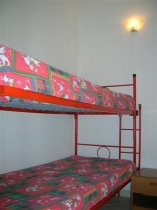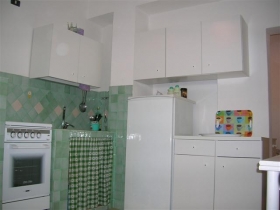Divided, by referendum, into eight provinces, the lay-out of Sardinia is further characterised by territorial specificity of great interest that represents dense microcosms of well exploited and exploitable environmental and cultural wealth. The island in fact keeps its vital subdivision alive, set up in medieval times, of the four judicial entities - Cagliari, Torres, Arborea and Gallura - in curatorial areas, that is, in easily circumscribed administrable regions. The pulsating heart of the island includes territories rich in tradition and exceptional natural landscape such as Barbagia, Baronie, Gennargentu, Supramonte, Mandrolisai, Barigadu, Sarcidano and Goceano. Unusual, often little known sceneries, rich in charm and identity to discover corners and snippets of the thousand faces of Sardinia.
Mountains, rocks, crystalline sea: this is the landscape that is found in the territories that make up this section of Sardinia, that is, the Ogliastra with its ‘Tacchi’ (mountain outcrops), desert areas and small isolated coves; the Gennargentu with its snow-covered mountain tops and its skies, playground to the majestic golden eagle; and finally the Supramonte, an uncontaminated paradise of still unexplored caves, centuries-old forests and archaeological and naturalistic treasures.
In these areas the keen sports enthusiasts can find their dream: in fact, there is all the space needed to practice equestrian sports, even long rides on the beaches, to climb up the tall, vertical rocky walls that look out onto the sea, to do a variety of surfing activities, to go trekking and go on mountain bike excursions, all pleasant alternatives to visit otherwise inaccessible areas.
The Ogliastra stretches from the high basin of the Flumendosa up to the eastern slope of the Gennargentu, facing out onto the Tyrrheanian Sea with its tall, rocky coast, of spectacular beauty. It also includes, on its southern borders, a part of the historical territory of the ancient marquisate of Quirra.
It is the least populated province in Italy: the territory, almost exclusively mountainous, is to a large extent covered by woods and pastures. Even if now it has also become an important tourist centre, the Ogliastra also continues to live off its traditional activities such as its sheep rearing (most tasty is the pecorino cheese and other cheeses, such as the cas'e fitta and the casu axeru), its agriculture and wine-production (the famous Cannonau of Jerzu), and craftsmanship. The awareness of the importance of safeguarding the territory has pushed the Regional Government and the Municipalities to invest in the reforestation and in the exploitation of the wood areas, where it is possible to go on excursions to discover its naturalistic and archaeological patrimony.
The variety of the coastal landscape is one of the great wealths of the territory. In the north the vertical calcareous cliffs are found in small, silent coves, such as the famous Cala Goloritzè, accessible only by boat or on foot: Ogliastra is the land of trekking par excellence. More to the south, in the territories of Arbatax, Tortolì and Gairo, the wide sandy beaches such as Cea, San Gemiliano, Orrì, and Musculedda, alternate with the rocks of red porphyry, granite or to the unusual black beach of Coccorocci. The Ogliastra is one of those marvellous places in which, between the mountain and the sea, at every bend we discover a different landscape.
The Cardedu area
Cardedu has 1500 inhabitants and is the “youngest” community within Ogliastra, having only achieved the right to local self-government in 1984. The community originated however in the 1950s. A number of the inhabitants from the main community Gairo in the mountains, decided to settle along the coast where they were safe from thunderstorms and landslides. The apartments are situated approximately 3km from the quiet area of Cardedu and 100mt. away from the beach, buried in the valley of Rio Pardu and surrounded by the well- tended vineyards, from where the famous Cannonau red wine is pressed.
The coastal area near the Apartments is dominated by a kilometre-long and wide sanded beach. The various beach sections “Museddu” “Perda é Pera” “Foddini” are followed by fabulous, easily reached bays (“la Spiaggetta”, “su Sirboni”), some of them embedded in red cliffs, as well as numerous secluded bays (“Cala é Luasa”). This extraordinary coastal variety is completed with the pebble beach “Coccorocci”, formed completely out of smooth polished gravel. The bay borders with the 875m high “Monte Ferru”, rich in flora and fauna and ideal for hiking and trekking.
All beaches within the vicinity of the apartment are perfect for surfing and kite-surfing. As well as its nature, the community of Cardedu has also remarkable archaeological sights to show for itself, for example “Domus de Janas”, a grave, over thousands of years old, carved into the cliff, or the holy fountain “Su Presoneddu”. Also worth seeing is the small country church “Madonna del Buoncammino”, which originated apparently hundreds of years ago and stands between oak and olive trees. 15km away from the apartment, in the village of Ulassai, is a very important dripstone cave (approx. 850m in length).
































